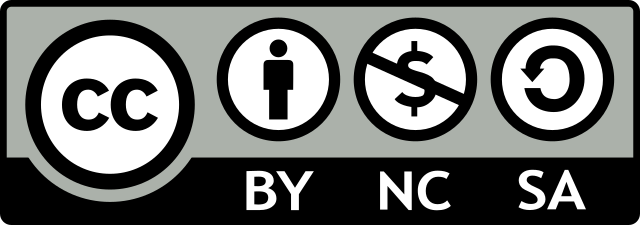Pemanfaatan Platform Google Dalam Pembelajaran Bahasa Arab di SMA Muhammadiyah 7 Makassar
Abstract
This study aimed to examine the use of the Google platform in learning Arabic, to analyze the factors supporting and limiting this use and to examine the advantages of using the Google platform for class XI students at SMA Muhammadiyah 7 Makassar to learn Arabic. This study was descriptive qualitative in nature. This study's findings revealed familiarity with the Google platform, which includes Google Classroom, Google Meet, Google Forms, Google Slides, and Google Documents. There were two elements involved in the utilization of the Google platform: supporting factors and hindering factors. Network/wifi, smartphones/computers, workshops/training, and google platform applications were the supporting elements for educators, while the supporting factors for students were educators, parents of students, smartphones/computers, internet quota, and google platform applications. The impediments encountered by educators: The limited ability of educators to access the Internet and school facilities, as well as Internet quotas, network instability, and students' lack of awareness as impediments for educators. The advantages of using the Google platform for educators include facilitating the delivery of content, developing an innovative learning method, and saving time. Students were permitted to accept and complete tasks at any time, unrestricted by space or time constraints.
References
Batubara, H.H., "Penggunaan Google Form Sebagai Alat Penilaian Kinerja Dosen di Prodi PGMI Uniska Muhammad Arsyad Al Banjari". Al-Bidayah: Jurnal Pendidikan Dasar Islam, Vol.8, No.1, 2016.
------------------ & Noor, D. A., "Workshop Penggunaan Google Form Sebagai Media Evaluasi Pembelajaran Pada Dosen-Dosen Fakultas Studi Islam." Jurnal Pengabdian Al-Ikhlas Universitas Islam Kalimantan Muhammad Arsyad Al Banjary, Vo.2, No. 1, 2017.
Corbyn, Gregory. Google Classroom: 99 Ideas How To Use Google Classroom Effectively. The Ultimate Guide To Learn Google Classroom. Independently Published. 2019.
Creeber, G & R Martin, (ed.), Digital Cultures: Understanding New Media,Berkshire- England: Open University Press. 2009.
Danaher, P.J. Wilson, and R. Davis, A Comparison of Online and Offline Consumer Brand Loyalty, Marketing Science. Horton, Paul B dan Chestern L Hunt. (1996). Diterjemahkan oleh: Amiruddin Ram dan Tita Sobari. Jakarta: Erlangga. 2003.
Dijk, Jan Van. The Network Society. London: SAGE Publications. 2006.
Kwiatkowska, Barbara; Harm Dotinga, eds. International organizations and the law of the sea: documentary yearbook. Martinus Nijhoff Publishers. p. x. ISBN 978-90-411- 1561-4. 1999.
McQuail, Denis. Teori komunikasi massa. Jakarta: Salemba Humanika. 2011.
Mondry, Teori dan praktik Jurnalistik. Bogor: Ghalia Indonesia. 2008.
Mulyana, Deddy Iskandar. Ilmu Komunikasi: Suatu Pengantar. Bandung: PT.Remaja Rosdakarya. 2007.
Munir, Pembelajaran Jarak Jauh, Bandung: Alfabeta. 2010.
Pradana, dkk. Pengaruh Penerapan Tools Google Classroom pada Model Pembelajaran Project Based Learning terhadap Hasil Belajar Siswa. Jurnal IT-Edu. Vol.02, No.01. 2017.
Purnamasari. Sriwulan. Jurnal Teknologi Pendidikan dan Pembelajaran, Tahun 6, Nomor 1 Juli 2019.
R, Yuniarti, & Hartati, W. "Pemantauan Penyebaran Virus Covid-19 Pada Mahasiswa Stia Muhammadiyah Selong Menggunakan Aplikasi Google Form". Jurnal Pengabdian Kepada Masyarakat, Vol. 3, No. 1, pp. 19-28, 2020.
Rahmanto, M. A., & Bunyamin. Efektivitas media pembelajaran daring melalui google classroom. Jurnal Pendidikan Islam, 11 (2), 119-135. 2020. http://repository.uhamka.ac.id/id/eprint/1535/
Republik Indonesia, Undang-Undang RI Nomor 14 Tahun 2005 tentang Guru dan Dosen. Cet. IV; Jakarta: Sinar Grafika. 2011.
Rohani, Ahmad. Media Instruksional Edukatif. Jakarta: PT. Rineka Cipta. 1997.
S. A ,Hapsari , & H, Pamungkas. Pemanfaatan Google Classroom sebagai Media Pembelajaran Online di Universitas Dian Nuswantoro. WACANA: Jurnal Ilmiah Ilmu Komunikasi. 2019.
Sally, Jensen McMillan. Exploring Model of Interactivity from Multiple Research Traditions: Users, Documents, and Sistems dalam Leah A Lievrouw & Sonia Livingstone (eds). Handbook of New Media. London: Sage Publications. 2002.
Shaharanee, Mohd. I. N., Jamil, J., & Mohamad Rodzi, S. S. The application of Google Classroom as a tool for teaching and learning. Journal of Telecommunication, Electronic and Computer Engineering. 2016.
Sianipar, A. Z. "Penggunaan Google Form Sebagai Alat Penilaian Kepuasan Pelayanan Mahasiswa". Journal of Information System, Applied, Management, Accounting and Research, Vol. 3, No. 1, pp. 16-22, 2019
Soeharto, Karti. dkk, Komunikasi Pembelajaran: Peran dan Keterampilan Guru-Guru dalam Kegiatan Pembelajaran. Surabaya: SIC. 1995.
Solomon, Michael R. Consumer Behavior : Buying, Having and Being, 9th ed.,. New Jersey: Pearson Addison Wesley, 2011.
STT Banua Niha Keriso Proestan Sundermann Nias, Pendidikan di Era Revolusi Industri 4.0. Nias : STTBNKP Sunderman, 2019.
Usman, Metodologi Pembelajaran Agama Islam. Jakarta: Ciputat pers. 2002.
Copyright (c) 2023 Wahyuni Aulia AR, Azhar Arsyad, Haniah, Sampar

This work is licensed under a Creative Commons Attribution-NonCommercial-ShareAlike 4.0 International License.

